Patriot Viper III Review: 2x4 GB at DDR3-2400 C10-12-12 1.65 V
by Ian Cutress on November 18, 2013 1:00 PM EST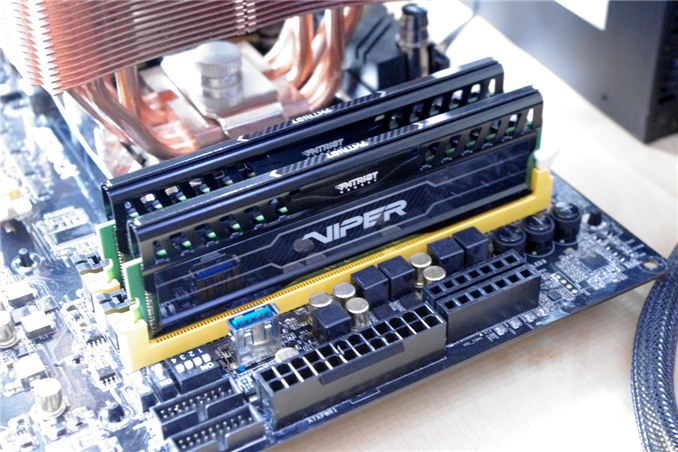
Perhaps I am out of the loop, but in recent CPU generations of PC building, Patriot Memory has not featured much on my radar. A quick look at their product range tells a tale: the fastest DDR3 kits are 2400 MHz, and by comparison to some other memory manufacturers, their presence at Computex was somewhat discreet. Nevertheless, when I got in contact for our series of quick fire Haswell memory reviews, Patriot were keen to sample a couple of their 2x4 GB Viper III kits of DDR3-2400 C10 1.65V.
Patriot Viper III 2x4 GB DDR3-2400 C10 Overview
With mainstream computing platforms all focused on dual channel memory, we are still in the realm where two sticks of DRAM in a kit is the norm. Modern OSes are eating varying amounts of memory, and the more computing power people have access to, the ‘lazier’ programmers and users can be with their memory allocation. For casual desktop users on a Windows based platform, 4 GB can easily be enough: gamers and power users can look at 8 GB and be happy, while power users/enthusiasts/multi-GPU gamers will desire a 16 GB kit minimum. Only specific niche targets will aim for more, for which there are still a numerate selection of choices to consider.
But for most builders, an 8 GB kit still hits a nice balance between ‘enough memory’ and cost. The kit Patriot have sent us for review is not actually on Newegg right now – the nearest to the PV38G240C0K model is actually the PV38G240C1K variant, a 2400 C11 kit, which retails for $92. On Amazon.com the PV38G240C0K kit is actually $117, although on NCIX it retails for CAD$100. Because Patriot sent us two 2400 C10 kits to test, we tested a kit as it comes and both kits together, although this is not a recommended scenario (see later).
In terms of overclocking, this memory kit starts with an initial Performance Index of 240, and with nothing more than a small bump in voltage and a memory strap adjustment, we see 2666 10-12-12, giving a PI of 267. Adjusting through various CL values confirmed that a PI of 267 is the best result for a 24/7 stable system, valid up to 2666 C10. Beyond C10 the system refused to be stable above 2666 MHz, thus lowering the PI.
Specifications
| ADATA | Corsair | Patriot | ADATA | G.Skill | ||
| Speed | 1600 | 2400 | 2400 | 2400 | 2800 | 3000 |
| ST | 9-11-9-27 | 11-13-13-35 | 10-12-12-31 | 10-12-12-31 | 12-14-14-36 | 12-14-14-35 |
|
Price (at review) |
- | $200 | - | $117 | $316 | $520 |
| XMP | - | Yes | Yes | Yes | Yes | Yes |
| Size | 2 x 8GB | 2 x 8GB | 2 x 8GB | 2 x 4GB | 2 x 8GB | 2 x 4GB |
| PI | 178 | 218 | 240 | 240 | 233 | 250 |
|
|
||||||
| MHz | 1600 | 2400 | 2400 | 2400 | 2800 | 3000 |
| Voltage | 1.35 V | 1.65 V | 1.65 V | 1.65 V | 1.65 V | 1.65 V |
| tCL | 9 | 11 | 10 | 10 | 12 | 12 |
| tRD | 11 | 13 | 12 | 12 | 14 | 14 |
| tRP | 9 | 13 | 12 | 12 | 14 | 14 |
| tRAS | 27 | 35 | 31 | 31 | 36 | 31 |
| tRC | 46 | 43 | 49 | |||
| tWR | 20 | 16 | 16 | |||
| tRRD | 315 | 301 | 391 | |||
| tRFC | 6 | 7 | 7 | |||
| tWTR | 10 | 10 | 12 | |||
| tRTP | 10 | 10 | 12 | |||
| tFAW | 33 | 26 | 29 | |||
| CR | 2 | 3 | 2 | |||
Compared to the ADATA 2400 C11 we reviewed last time, most of the secondary sub-timings are smaller (tRC, tWR, tRRD, tFAW) - some of this will be due to the lower density (2x4 GB vs 2x8GB) memory. The amazing thing is that our XMP detection showed a command rate of 3T for the Patriot memory, although this was reported as 2T in the operating system.
Visual Inspection
In terms of the kits we have in to test, Patriot and Corsair are doing similar packaging paradigms: a cardboard outer shell that is sealed, and an easy to open plastic insert to hold the memory stable in transit.
The heatsink extends an extra 12mm (0.47 inches) above the memory PCB, giving a total heatsink height of 36mm.
Buying the Correct Memory Kit
For this review, we have done two sets of numbers: one with one kit of the Patriot 2400 C10 memory, and another with two kits put in the same system. Despite this testing, it is not a recommended scenario: do not buy two memory kits, even if they are the same model, and expect them to work together. There are many, many forum posts with users having two of the same memory kits in a system and it not working. I have even been a victim at one point to this scenario.
There are several factors at work:
- When you buy a memory kit, it is not only designed to work at the rated speed, but in the rated configuration only. There is no guarantee it will work in a larger memory configuration.
- While each memory kit may be labelled the same, they can be different, especially when it comes to overclocking.
- More often than not, memory timings are very aggressive, meaning for two kits to work together, memory timings have to be weakened.
- The only time it will work is if the two memory kits have lots of overhead, and if the CPU memory controller can handle it.
Rule of thumb: if you want 16GB/32GB/64GB of memory, buy a 16GB/32GB/64GB kit. If it works out it costs more, that is because the kit is fully validated in that configuration.


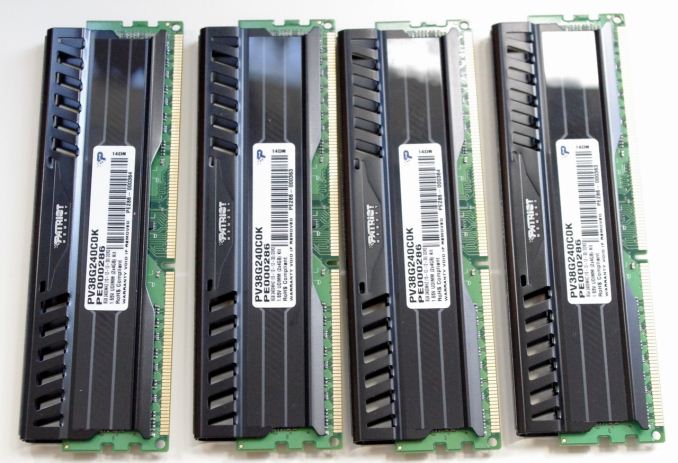
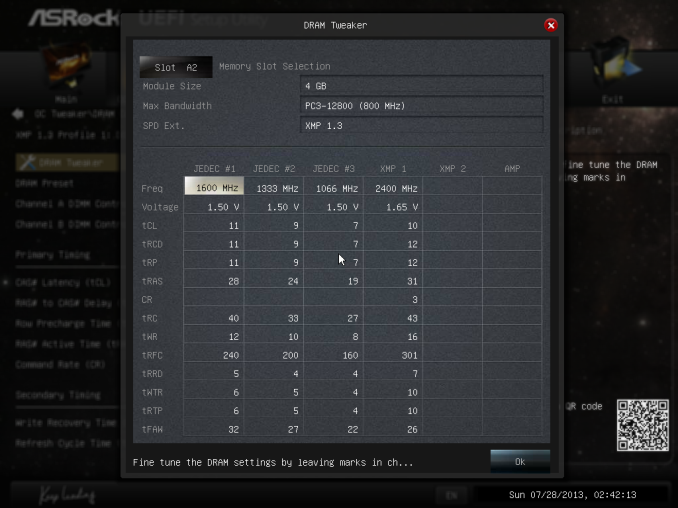
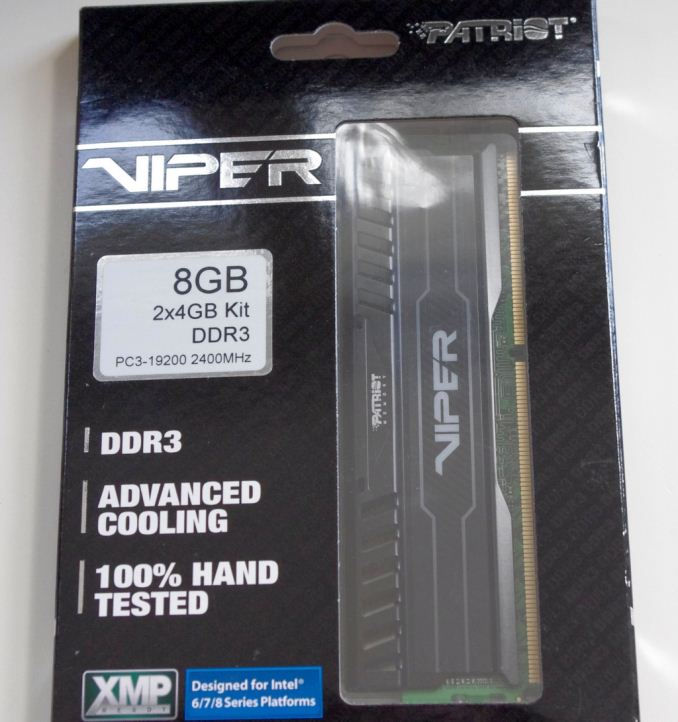
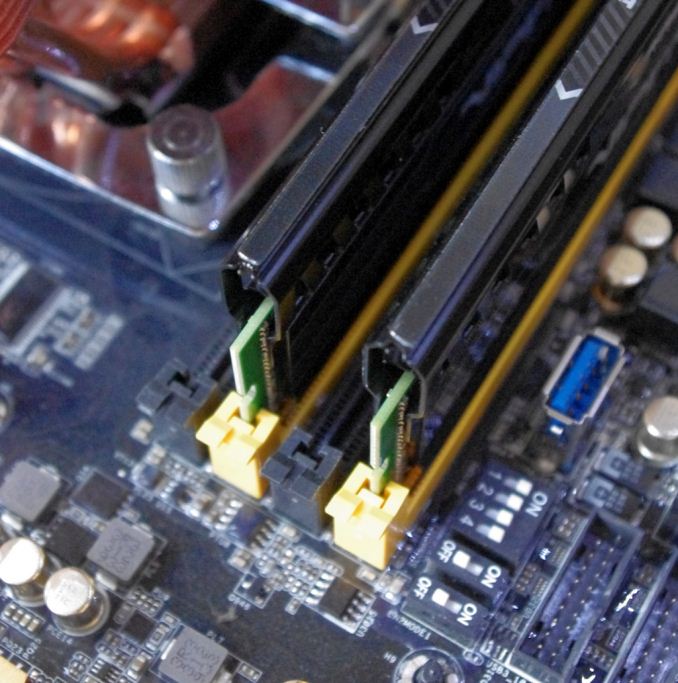
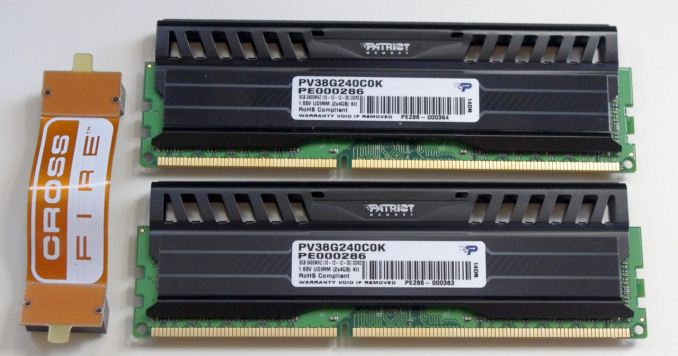
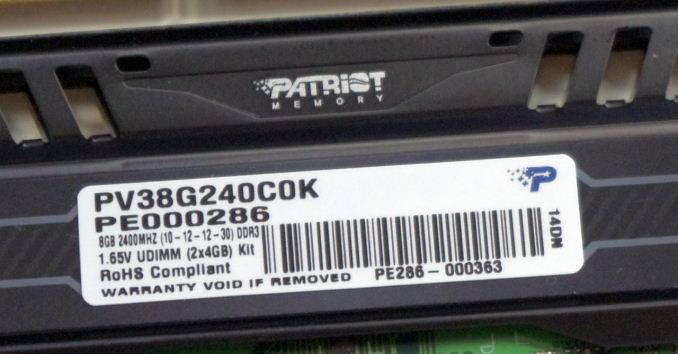














48 Comments
View All Comments
julandorid - Monday, November 18, 2013 - link
Thanks for the review, but what exactly "featured review" means?IanCutress - Monday, November 18, 2013 - link
That's a little tagline we can attach to the front page articles when they're on the top.Wall Street - Monday, November 18, 2013 - link
I think that it is the opposite of capsule review. A featured review is a.k.a. a full review.TemjinGold - Monday, November 18, 2013 - link
Whoa... why is the 2X4 by GSkill $520?IanCutress - Monday, November 18, 2013 - link
DDR-3000 C12: you have to bin a lot of ICs to get ones with the right voltage/performance characteristics for that kit. Same reason why the more expensive CPUs are also the faster (in MHz numbers or cores) than the cheaper ones.ShieTar - Tuesday, November 19, 2013 - link
True. But you can get DDR 2666 with CL10 for about 100€, so a set with an 7% shorter access time (higher "PI" as Ian insists on calling it), and only a 11% lower transfer rate for about a fifth of the price.The 500$ kit seems to be exclusively for those who don't have to work for their money, or maybe those who are hunting records as a hobby.
DanNeely - Tuesday, November 19, 2013 - link
The very top of the line always is extremely expensive, and - when it's the result of extreme binning - has to be in order to limit demand to the miniscule supply available.Gen-An - Tuesday, November 19, 2013 - link
Exactly, they have to test the ICs individually with those tester kits and bin them for speed. I just find it amazing that a chip that is designed for say, 1600 C11 at 1.5v has the potential to run 3100 C12 with 1.65v, that's nearly double its rated clock speed with a mere 0.15v bump in voltage.sf101 - Monday, December 9, 2013 - link
If you want 2400 guaranteed out of the box you pay the premiums.most of the 2133 mhz black momba sticks could also do 2666mhz @ 10-13-10-30-2t but your voltages may vary.
And more than likely some of that is because of individual IMC tolerances per cpu.
Franzen4Real - Monday, November 18, 2013 - link
When it comes to memory, over the years I have tried to read up on different reviews and look at benchmarks in an attempt to understand when it is better to run tighter timings/lower MHz as opposed to looser timings/higher bandwidth. I'm sure it is a case by case basis, but was wondering if the always knowledgeable and helpful Anandtech commenters could give me a quick, dummy terms, explanation of when tight timings or clockspeed is better? Looking at your graph, it shows the C7 1866 through C10 2666 all having the same performance index score, but what situations do those different timings/MHz become better/worse? I hope this isn't too in depth of a question.I don't know if this analogy is correct, but I'm seeing it as if RAM was a race car on a track, high bandwidth/loose timings would mean your car travels faster, but has to do more laps around the track to complete. Tight timings/lower bandwidth means the car travels slower but doesn't have to do as many laps to complete. If I am correct on this, at what point does less laps trump traveling faster?
As a side note, I am looking to build a Haswell desktop in Jan/Feb. It will have one GPU (probably one of the R9's) and more than likely a 2x8gb RAM kit. My usage would very roughly be 70% gaming, 25% rendering in 3DS Max and using some Adobe programs, 5% or less video encoding. I'm looking for help in deciding what to look for in this scenario, but also to finally have a better understanding of how these settings affect different workloads.
Sorry for the wall of text!!